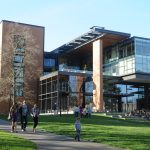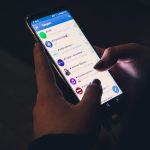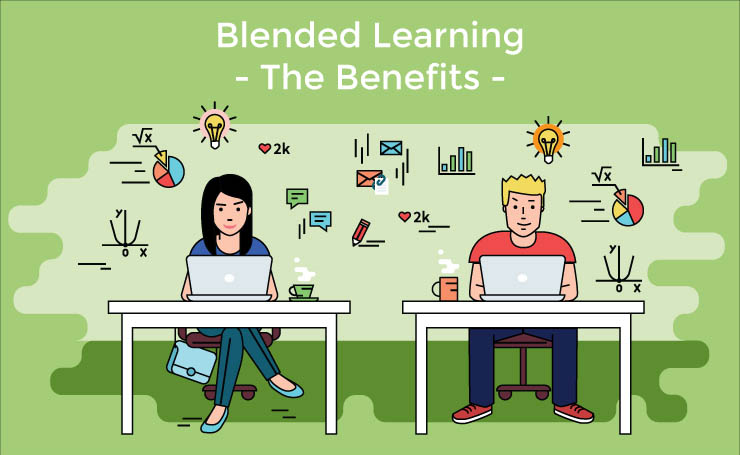
Since blended education – more commonly known as blended learning — is a growing trend at post-secondary institutions across North America, both parents and students will want to familiarize themselves with the concept and understand how it works and why its popularity is increasing.
Blended education ideally combines classroom and online approaches to teaching and learning, offering more flexibility to teachers and a richer experience to students. The successful blended experience, says Professor Tony Bates, author of Teaching in a Digital Age: Guidelines for Designing Teaching and Learning, will create optimum synergy between the in-person sessions and learning online. Blended learning focuses on outcomes, employing a variety of methods to aid the students in learning the required material.
Writing in Education Week magazine, teacher Bill Tolley says that many teachers are struggling with blended education, because it means relinquishing some authority over content and how time is allocated and replacing it with “an asynchronized, individualized and messy process.” Tolley contends, however, that it is worth the struggle, because the benefits outweigh the inconveniences and it is the only way to remain relevant “in a world where modern learning can easily outpace traditional teaching.”
Student Satisfaction
A 2013 study conducted by Educause, a not-for-profit association of IT professionals committed to advancing higher education, bears out Tolley’s contention that blended education is the way of the future. The organization surveyed 1.6 million undergraduate college and university students and received responses from 113,000 respondents in 13 countries. Their data show that students prefer blended education environments to the traditional lecture courses.
“College students seem to recognize effectiveness when they see it …” wrote the report’s authors, “And students’ long-standing desire to retain some degree of face-to-face contact with their professors persists, even with the increasing sophistication of online methods of interaction.”
A smaller 2013 study at Queen’s University in Kingston, Ontario, evaluated the success of blended education in a human geography course that is typically taught in a large lecture setting. By re-designing the course so that lecture content was provided online and classroom time was devoted to discussion and problem solving, the researchers for the Higher Education Quality Council of Ontario found that “students show a stronger engagement with the material and a more in-depth style of learning.”
Successful or Not?

Student preferences aside, how successful is blended learning compared to the traditional classroom lecture when it comes to learning outcomes? Do students learn as much through this new style of course delivery as they did with the old-fashioned method?
A respected 2013 report analyzed 45 studies that compared blended learning and face-to-face teaching and concluded that students performed modestly better in blended classrooms than in traditional lectures. A 2004 large-scale analysis of 232 studies comparing classroom instruction with online education indicated that students who received an asynchronous online education – in other words, their coursework wasn’t done in lockstep with all the other students in their class – did somewhat better than students in traditional classes. Writing for teachonline.ca, Sir John Daniel notes that the authors of these studies concluded that it was the combination of classroom and online learning, “especially the inclusion of different kinds of learning activities,” that was effective.
What Do Students Do Independently?
Independence and self-discipline are both important aspects of blended education, requiring students to take more responsibility for their own learning – which, in turn, usually provides greater satisfaction when the subject matter is mastered. Students engage in a wide variety of tasks independently.
For example, an instructor for the Introduction to Psychology course at McMaster University in Hamilton, Ontario, decided to use a combination of live lectures, online web modules and small group tutorials for their classes. The weekly web modules delivered the primary course content and included slides, animation and narration. The modules also included a number of interactive features, including links to the research referred to in the week’s talk; a live chat option allowing students to talk with classmates who were online; online polls that produced an instant tally of results; and weekly online tests. In addition, the live lectures offered case studies and examples of how the course theory was being put into practice, while the tutorials provided a structured opportunity for discussion and group projects.
The Sky’s the Limit
The introduction of blended education allows teachers to be more creative in the way they structure and deliver courses, providing opportunities to incorporate new technologies into their lessons. Both teacher and student must be on their toes, because as technology changes, teacher and student must adapt.











